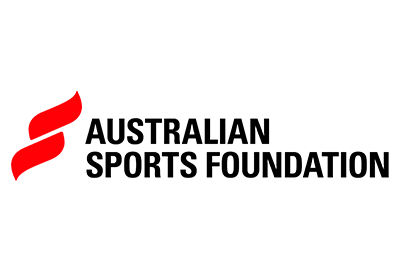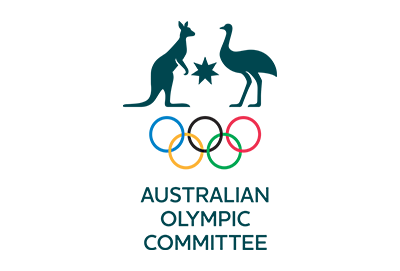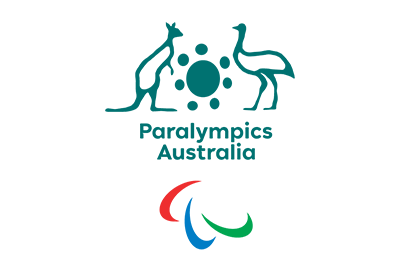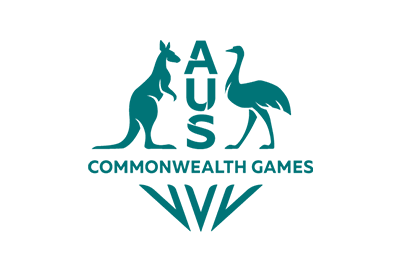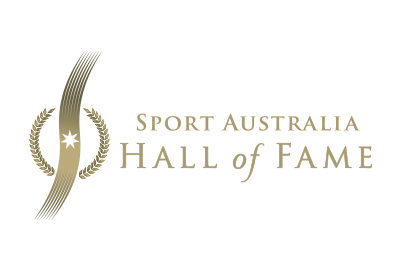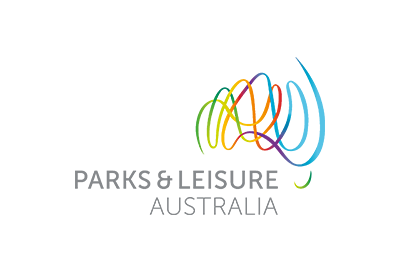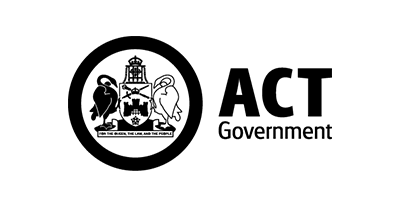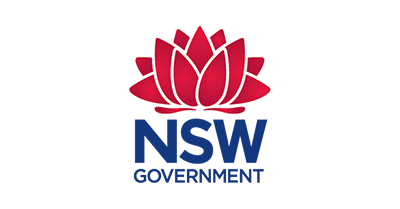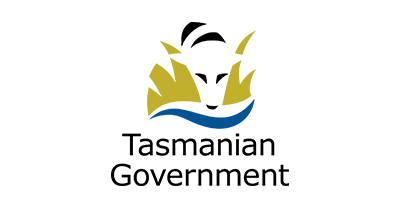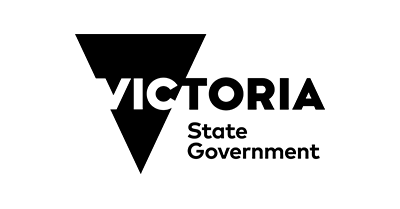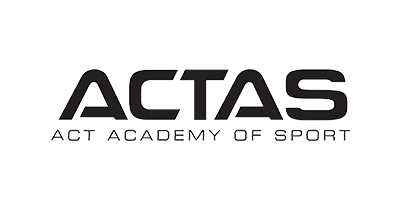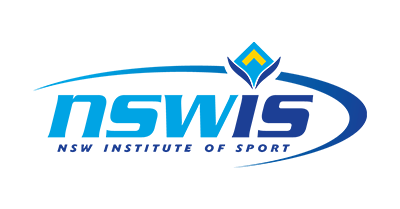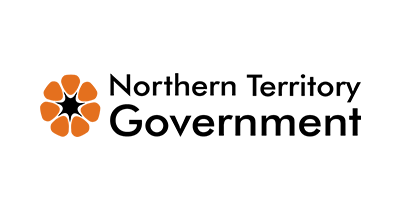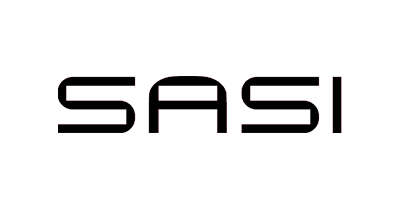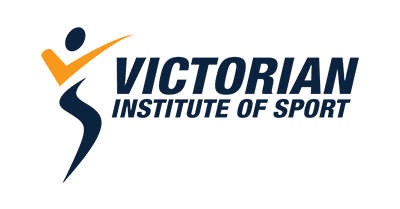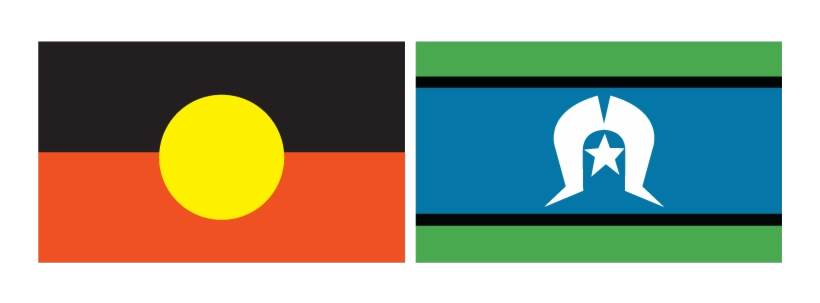Role models
Role models demonstrate attainable success in sport at all levels, counteract negative stereotypes, and represent possible future states.
Role models can encourage individuals to play sport and become more physically active. They provide evidence that success in an activity is attainable, help counteract negative stereotypes, and represent possible future states. 15, 19, 29
While high performance and professional First Nations athletes are often highlighted as successful role models, other research emphasizes the importance of family members, friends, coaches, and the broader community to promote positive engagement in sport, education, and other healthy behaviours. 9, 15, 17, 30
A report into First Nations engagement and retention in netball in Western Australia found that the desire to coach, mentor, or be a role model was the fifth most common motivator for participation, and that participants were inspired by role models in netball (sixth most common motivator). 15
Another study of the Indigenous Marathon Program (IMP) in a remote Torres Strait Island community found that Indigenous respondents were more likely to be inspired by IMP runners. As local role models the IMP runners helped to reduce levels of ‘shame’ and embarrassment which can be a common barrier to participation and helped to promote both running and broader health outcomes. 19
A lack of role models in elite sport, including limited numbers of First Nations players, coaches, and officials, is often seen as a barrier to participation in sport. Seeing elite First Nations participants at all levels can help to signal that a sport is welcoming and safe to join. 15, 31
Resources and reading
- How Sydney Roosters star Connor Watson is helping lead the fight against Indigenous youth suicide, opens in a new tab, Nick Campton, ABC, (18 May 2023). Watson's 'Boots for a Brighter Future' program will form part of the NRL's Indigenous Round for the sixth straight year with some of rugby league's biggest names to don boots decorated with Indigenous artwork by 43 youths across New South Wales and Queensland. 'Boots for a Brighter Future' is just one of a number of initiatives run by the Cultural Choice Association, an organisation run by Watson and his family with the goal of raising awareness and support around Indigenous youth suicide.
- You can’t be what you can’t see: the benefits for and the pressures on First Nations sportswomen, opens in a new tab, Michelle O'Shea, Hazel Maxwell, Robyn Newitt. Sonya Joy Pearce, The Conversation, (11 August 2022). A record number of female Aboriginal and/or Torres Strait Islander athletes represented Australia at the 2022 Birmingham Commonwealth Games. While embracing their role model status, it is worth considering the weighty expectations and costs that accompany this visibility. On top of the pressures of representing Australia at the elite level, First Nations sportspeople also have to contend with the politicisation that still surrounds their very identity.
- AFLW illustrates importance of Indigenous role models, opens in a new tab, Tash Gunawardana, Siren, (18 August 2020). Indigenous footballers in the AFLW have a positive impact as role models for Indigenous women and girls, encouraging them to be active and play sport.
- Patty Mills and Addin Fonua-Blake show power and pitfalls of the athlete's voice, opens in a new tab [paywall], Caden Helmers, Canberra Times, (11 July 2020). Patty Mills is working tirelessly to drive campaigns for equality with his entire NBA salary set to go towards social justice movements.
- Patty Mills launches 'Team Mills Foundation' to help people in need, opens in a new tab [paywall], Chris Dutton, Canberra Times, (27 May 2020). NBA championship-winner Patty Mills says he wants to bring "long-lasting improvement" to people's lives after launching a foundation to support women and underprivileged families, culture, diversity and enact change in the environment.
- Barty, Kerr and the importance of indigenous role models, opens in a new tab, Tash Gunawardana, The Women's Game, (8 May 2020). [Ashleigh Barty] is one of many prominent Indigenous female athletes including Sam Kerr and Kyah Simon in football and Ashleigh Gardner for the cricket national team. The wave of Indigenous talent couldn't come soon enough - in the latest available data, only 23% of Indigenous women were considered regularly 'physically active', as opposed to 66% of non-Indigenous women.
- Why are so few professional sport coaches from Aboriginal and Torres Strait Islander communities?, opens in a new tab Andrew Bennie, Demelza Marlin, Nicholas Apoifis, The Conversation, (13 June 2016). Sport has certainly provided inspirational athletic role models for young Aboriginal and Torres Strait Islander Peoples. Only recently, meanwhile, have commentators considered the role of coaches as mentors, community leaders, and educators who can change lives.
- Indigenous role models make a world of difference, opens in a new tab, Andrew Ramsay, Cricket Australia News, (25 December 2015). It is difficult to oversell the impact of having highly visible Indigenous role models involved in the game at the highest level.
High profile First Nations athletes are used as role models by several Australian organisations and programs to promote positive health and lifestyle messages. Some of these programs include:
- National Aboriginal Sporting Chance Academy (NASCA), opens in a new tab. NASCA utilises a combination of Indigenous and non-Indigenous mentors and staff across all of our program streams. In order to remain successful, NASCA’S mentoring programs involve local community and parents and are long term, respectful, mutually beneficial relationships.
- Waalitj Foundation, opens in a new tab. Aims to lead the provision of education, employment and business opportunities for Aboriginal and Torres Strait Islander Australians by working together to empower and build capacity amongst individuals, their families and their communities. We influence and inspire the empowerment of our people through our diverse work force, which is led by our First Australian role models.
- Indigenous Marathon Foundation, opens in a new tab. The Indigenous Marathon Foundation (IMF) was established in 2009 by world marathon champion Rob de Castella. It is a health promotion charity that uses running to celebrate Indigenous resilience and achievement, and create inspirational Indigenous leaders.
- Racism: It Stops with Me, opens in a new tab. The national Australian Human Rights Commission and Play by the Rules campaign to raise awareness of racism in society has used high profile sportsmen and women such as Adam Goodes to promote key messages through multiple media channels.
- Red Dust, opens in a new tab. A health promotion organisation that delivers innovative health promotion programs in partnership with remote communities. The Red Dust Role Models come from a variety of disciplines, including sport, art and music, but are also recognised for their mentoring and teaching capabilities.
- Share a Yarn, opens in a new tab. This initiative aims to provide Australian Elite Athletes with meaningful opportunities to connect and build relationships with Aboriginal and Torres Strait Islander communities, and learn more about the differing cultures, lands, histories, and people within them. The AIS partners with organisations that are already delivering programs to youth in these communities, to open up channels for ongoing communication and learning between participants and athletes.
- Coaching Unlimited, opens in a new tab. A national coaching education program that provides sport-specific coaching accreditation, and research-based health promotion workshops, to support Aboriginal and Torres Strait Islander Peoples become sport coaches and community leaders.
- Coaching Unlimited: Empowering generations of Aboriginal and Torres Strait Islander leaders, opens in a new tab, A research report commissioned by Netball Australia and Netball New South Wales, (2017). Based on the survey and interview results, all coaches either agreed or strongly agreed that the Coaching Unlimited workshop included useful resources; increased their interest in, and understanding of, the workshop topics; and, enhanced their ability to implement strategies relating to the workshop.
- ‘We were made to feel comfortable and … safe’: co-creating, delivering, and evaluating coach education and health promotion workshops with Aboriginal Australian peoples, opens in a new tab, Andrew Bennie, Demelza Marlin, Nick Apoifis, et al., Annals of Leisure Research, Volume 24(1), pp.168-188, (2021). This paper outlines the processes for co-creating and delivering Coaching Unlimited. We used the Ngaa-bi-nya framework – an Aboriginal health and social programme evaluation framework. Using the four domains of Ngaa-bi-nya, we were able to confirm the importance of co-creating and delivering the workshops in a culturally safe and inclusive environment.
- Black Diamonds Report, opens in a new tab, Glass Jar, (April 2022). The first of its kind, the Black Diamonds Project reviews the netball service delivery to ensure that the policies and systems of netball in Western Australia are transformed to better facilitate the engagement and retention of Aboriginal people to the sport of netball. This review took place between February 2021 and February 2022. The dominant method of data collection was Yarning Circles, a uniquely Aboriginal methodology, with four stakeholder groups, across two phases. Report highlights that many participants enjoyed coaching, mentoring, or being a role model (5th most common motivator for participation), and that they were inspired by role models in netball (6th most common motivator). The majority of participants who spoke about role models talked about Indigenous or familial role models, whether that was in reference to growing up on the side of the court watching their mum or aunties play, being exposed to other Indigenous players or coaches, or watching/interacting with elite level Indigenous athletes. Several participants talked about the part that role models play in terms of advocacy, and the importance of representation in terms of achievability or courage (she can do it, so can I), and safety. A lack of role models, especially at the elite level of netball, was also referenced as a barrier. The lack of Indigenous representation at the elite level of netball was compared with footy, which was described as having a more welcoming culture that respected Aboriginal and Torres Strait Islander athletes. The lack of Aboriginal and Torres Strait Islander coaches and umpires was discussed not just at the elite level but across the board.
- Indigenous Australians' Participation in Sports and Physical Activities: Part 1, Literature and AusPlay data review, ORC International prepared for the Australian Sports Commission, (May 2017). This report includes a summary of the key drivers and barriers of Indigenous participation explored in the AusPlay data, and summarised from the recent literature. Having positive role models, in the form of older, more experienced participants from within the community, and professional Indigenous sportsmen and women, was also seen as motivating for young people and less experienced participants.
- Teach your children well: Adam Goodes, from unruly child to Indigenous statesman, opens in a new tab, Barry Judd, Diana Sandars, Celebrity Studies, Volume 14(2), pp.200-213, (2023). The ‘Goodes saga’ in Australian Football transformed Adam Goodes’ persona as a dutiful son of the sport into a polarising celebrity, most infamously through an encounter with a female teenage fan. In this article, we argue that the ‘Goodes saga’ exposed the contested nature of Indigenous celebrity stemming from settler anxieties about the unruly child and Indigenous statesman. Goodes transformed from a sports star, a dutiful ‘son’ of the sport to the national celebrity of a political statesman – a position of adulthood that might be described as characteristic of Eldership. Goodes’ self-manufactured celebrity persona, based in his concept of Indigeneity as ‘having a foot in both worlds’, was enacted through his mission to incorporate Indigenous cultural practices into the sport and wider settler-Australian culture. These actions were persistently disparaged through recourses to Euro-centric concept of the child and childhood as a state of innocence. We prompt readers to consider why the settler-public and its national institutions like the Australian Football League are so invested with surrounding Indigenous stars with a discourse of childhood. Why might the AFL and settler society more broadly consider the possibility that Aboriginal men might ascend to adulthood such a terrifying proposition?
- ‘You can’t be what you can’t see’: Indigenous Australian sportswomen as powerful role models, opens in a new tab, Megan Stronach, Michelle O’Shea, Hazel Maxwell, Sport in Society, Volume 26(6), pp.970-984, (2023). It is generally agreed that sporting role models (SRM) can inspire behaviour and attitude. This paper explores the influence of three contemporary Indigenous Australian sportswomen, and in doing so, their role as SRMs for women and girls. By applying and extending Marianne Meier’s (2015) theoretical lens, the actions, voices and influences of the women are considered. Meier recognizes and describes nine functions of SRMs. The voices of the Indigenous female athletes are portrayed through a media analysis including the athletes’ own social media commentary alongside mainstream media over a four-year period from 2017 to 2021. Examining the Indigenous sportswomen’s SRM status enables a layered and deeper understanding of the unique platform provided by sport, which can serve to strengthen their voices and influence. Indigenous Australian sportswomen are constructed in complex and sometimes contradictory ways, at times portrayed as advocates, deviants, sporting ambassadors, and political activists.
- Barriers and facilitators of sport and physical activity for Aboriginal and Torres Strait Islander children and adolescents: a mixed studies systematic review, opens in a new tab, Tamara May, Amanda Dudley, James Charles, et al., BMC Public Health, Volume 20, Article no.601, (2020). This study was focused on a comprehensive identification of barriers and facilitators at each level of the social-ecological model. From this process, gender and geographic location emerged as areas in which individual engagement with PA and sport was highly influenced by environmental, community, and policy factors. At the interpersonal level having family and friends who were active was one of the most commonly reported facilitators; and if they were inactive this was a barrier. This highlights the importance of participation in sport/PA for Aboriginal and Torres Strait Islander adults, in that they act as role models for children. Programs which offer sporting participation options for all family members (children, adolescents and adults), which appeal to males and females, are accessible through existing transport and related infrastructure, and are committed to communities through formal partnerships are needed.
- Indigenous Australian women promoting health through sport, opens in a new tab, Megan Stronach, Hazel Maxwell, Sonya Pearce, Sport Management Review, Volume 22(1), pp.5-20, (2019). Drawing from an agency/empowerment theoretical framework, the authors posit that, given support and opportunities, Indigenous women can become empowered to improve their mental and physical health through participation in sport. Sport managers can facilitate Indigenous women's agency in the effects of colonisation, which continues to be the basis of health issues for this cohort. Listening to Indigenous women and facilitating opportunities for them to take control of their own participation can help facilitate this process. Indigenous-women's only opportunities, partnerships with health agencies and sports organisations, culturally safe spaces and Indigenous women acting as role models are some factors that may augment Indigenous women's agency, and thus empowerment. Government, sports, community organisations and health agencies which provide these conditions in their program design can help to overcome entrenched social, historical and health inequalities that Indigenous women may experience.
- Mentoring as a tool to engage Aboriginal youth in remote Australian communities: a qualitative investigation of community members, mentees, teachers, and mentors’ perspectives, opens in a new tab, Louisa Peralta, Renata Cinelli, Andrew Bennie, Mentoring and Tutoring: Partnership in Learning, Volume 26(1), pp.30-49, (March 2018). Sport-based mentoring programs have been used across many contexts to engage young people in education. In this research, we explored the influence that an Aboriginal controlled organisation’s youth mentoring program has on three remote Aboriginal communities in Northern Territory, Australia. We used a composite set of culturally sensitive methods by including artefacts from the community members and mentees, informal interviews with community, and semi-structured conversations with mentors and schoolteachers. The findings demonstrate the positive feelings, many benefits, and relationships that had been established between mentors and mentees, the organisation and community over time. However, participants also suggested that it would be beneficial to engage mentors in activities with students not in the school system, and adults in the broader community. Despite some identified challenges, the mentoring program was perceived to be successful in engaging remote Aboriginal children in school and developing future career aspirations.
- The “ripple effect”: Health and community perceptions of the Indigenous Marathon Program on Thursday Island in the Torres Strait, Australia, opens in a new tab, Rona Macniven, Suzanne Plater, Karla Canuto, et al., Health Promotion Journal of Australia, Volume 29(3), pp.304-313, (2018). We examined perceptions of the Indigenous Marathon Program (IMP) in a remote Torres Strait Island community. Barriers to running in the community were personal (cultural attitudes; shyness) and environmental (infrastructure; weather; dogs). Enablers reflected potential strategies to overcome described barriers. Indigenous questionnaire respondents were more likely to report being inspired to run by IMP runners than non‐Indigenous respondents. Positive “ripple” effects of the IMP on running and broader health were described to have occurred through local role modelling of healthy lifestyles by IMP runners that reduced levels of “shame” and embarrassment, a common barrier to physical activity among Indigenous Australians. A high initial level of community readiness for behaviour change was also reported.
- The facilitators and barriers of physical activity among Aboriginal and Torres Strait Islander regional sport participants, opens in a new tab, Claudie Péloquin, Thomas Doering, Stephanie Alley, et al., Australian and New Zealand Journal of Public Health, Volume 41(5), pp.474-479, (2017). Participants were 12 Indigenous Australian adults, and 12 non‐Indigenous Australian adults matched on age, sex, and basketball division. Most participants reported engaging in regular exercise; however, the Indigenous group reported more barriers to PA. These factors included cost, time management and environmental constraints. The physical facilitators identified by our Indigenous sample included social support, intrinsic motivation and role modelling. This study is the first to compare the perspective of Indigenous Australians to a matched group of non‐Indigenous Australians and provides useful knowledge to develop public health programs based on culturally sensitive data.
- Sistas’ and Aunties: sport, physical activity, and Indigenous Australian women, opens in a new tab. Stronach, Megan, Maxwell, Hazel, Taylor, Tracy, Annals of Leisure Research, Volume 19(1), pp.7-26, (2016). Indigenous women have alarmingly low rates of participation in organized sport and physical activity (PA) in contemporary Australian society. To gain a better contextual and cultural understanding of the issues involved, we discussed the life experiences and the place of sport and PA with 22 Indigenous women. A complex amalgamation of cultural beliefs and traditions, history, gendered factors, and geography are presented in the women's stories. Sport and PA were highly regarded, providing the women with opportunities to maintain strong communities, preserve culture, and develop distinct identities as ‘enablers’. The women called for culturally safe spaces in which to engage in PA and noted the need for Indigenous females to act as role models.
- 'Achievement, pride and inspiration': outcomes for volunteer role models in a community outreach program in remote Aboriginal communities, opens in a new tab, Renata Cinelli, Louisa Peralta, Rural and Remote Health, Volume 15(4), (October 2015). There is growing support for the prosocial value of role modelling in programs for adolescents and the potentially positive impact role models can have on health and health behaviours in remote communities. Despite known benefits for remote outreach program recipients, there is limited literature on the outcomes of participation for role models. Twenty-four role models participated in a remote outreach program across four remote Aboriginal communities in the Northern Territory, Australia (100% recruitment). Cultural training, Indigenous heritage and prior experience contributed to general feelings of preparedness, yet some role models experienced a level of culture shock, being confronted by how disparate the communities were to their home communities. Benefits of participation included exposure to and experience with remote Aboriginal peoples and community, increased cultural knowledge, personal learning, forming and building relationships, and skill development. Effective role model programs designed for remote Indigenous youth can have positive outcomes for both role models and the program recipients. Cultural safety training is an important factor for preparing role models and for building their cultural competency for implementing health and education programs in remote Indigenous communities in Australia. This will maximise the opportunities for participants to achieve outcomes and minimise their culture shock.
- The community network: an Aboriginal community football club bringing people together, opens in a new tab, Alister Thorpe, Wendy Anders, Kevin Rowley, Australian Journal of Primary Health, Volume 20(4), pp.356-364, (2014). The aim of the present study was to understand the impact of an Aboriginal community sporting team and its environment on the social, emotional and physical wellbeing of young Aboriginal men, and to identify barriers and motivators for participation. Results of the interviews were consistent with the literature, with common concepts emerging around community connection, cultural values and identity, health, values, racism and discrimination. However, the interviews provided further detail around the significance of cultural values and community connection for Aboriginal people. The complex nature of social connections and the strength of Aboriginal community networks in sports settings were also evident. Social reasons were just as important as individual health reasons for participation. Social and community connection is an important mechanism for maintaining and strengthening cultural values and identity. Barriers and motivators for participation in Aboriginal sports teams can be complex and interrelated. Aboriginal sports teams have the potential to have a profound impact on the health of Aboriginal people, especially its players, by fostering a safe and culturally strengthening environment and encompassing a significant positive social hub for the Aboriginal community.
Access to resources Where possible, direct links to full-text and online resources are provided. However, where links are not available, you may be able to access documents directly by searching our licenced full-text databases (note: user access restrictions apply). Alternatively, you can ask your institutional, university, or local library for assistance—or purchase documents directly from the publisher. You may also find the information you’re seeking by searching Google Scholar, opens in a new tab.

